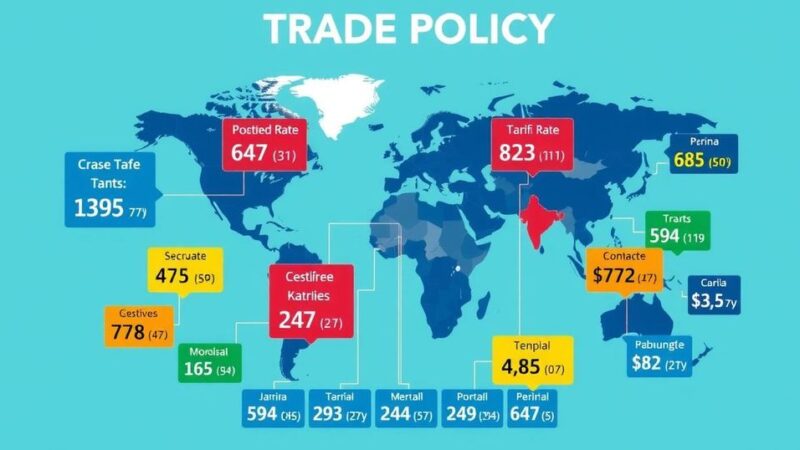Mexican stocks fell 4.87 percent, while Argentine stocks dropped over 7 percent as markets reacted to President Trump’s tariffs. Mexico avoided direct tariffs, causing temporary relief, whereas Argentina and Brazil were not spared and faced significant tariff hikes, raising concerns of a trade war.
Mexican stocks experienced a significant decline of 4.87 percent on Friday, despite not being included on United States President Donald Trump’s list of reciprocal tariffs. This downturn occurred amid rising anxiety in global markets regarding the potential onset of a trade war. Meanwhile, Argentine stocks suffered an even steeper decline, falling by over seven percent during Friday’s trading session, following Trump’s implementation of extensive import duties affecting numerous countries, including Argentina.
The drop in Mexican equities followed a slight increase of 0.54 percent the previous day, which was attributed to temporary relief within Latin America’s second-largest economy for avoiding the so-called “Liberation Day” tariffs. However, the reprieve for Mexico did not extend to Brazil, the region’s largest economy, or Argentina, its third-largest. On this day, Argentina’s prominent Merval Index saw a substantial fall of 7.38 percent, while Brazil’s Bovespa Index decreased by 2.96 percent.
Both Argentina and Brazil faced the imposition of 10 percent tariffs, which were part of a broader set of tariffs that reached up to 50 percent for various other nations throughout Latin America. This situation underscores the rising tensions in international trade, potentially involving various economic repercussions for Latin American nations.
In summary, Mexican and Argentine stocks experienced steep declines due to concerns over escalating trade tensions initiated by President Trump’s tariffs. Despite Mexico avoiding specific tariffs, the overall market atmosphere remains precarious. Argentina and Brazil are both facing significant challenges from newly imposed tariffs, reflecting the complicated dynamics of international trade and its effects on regional economies.
Original Source: tribune.net.ph






